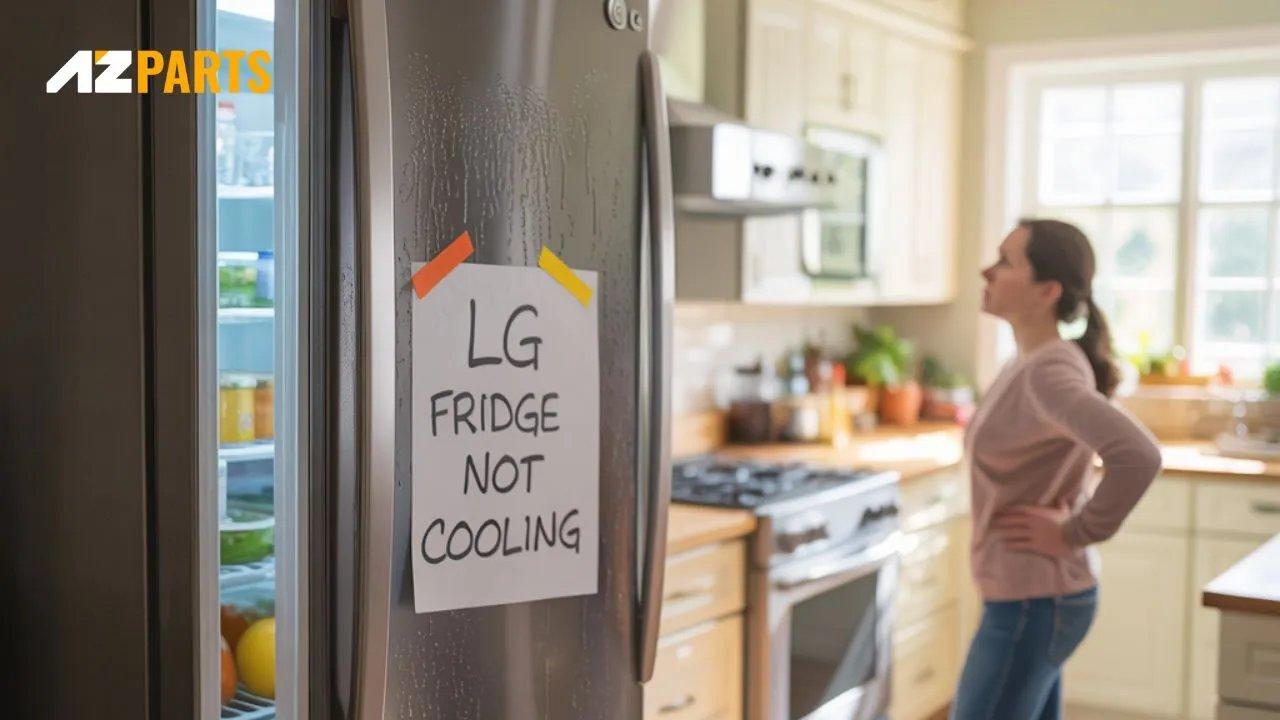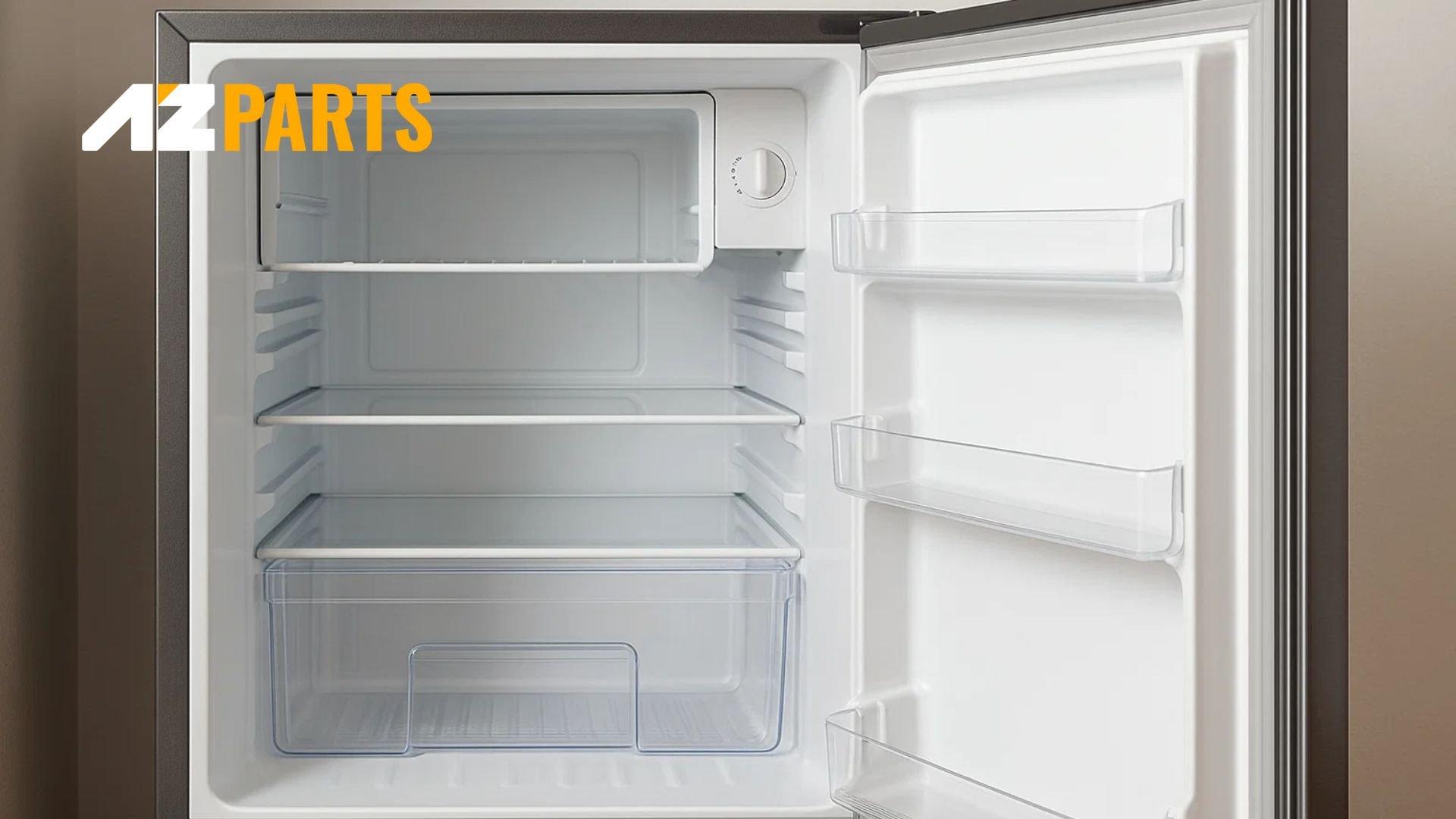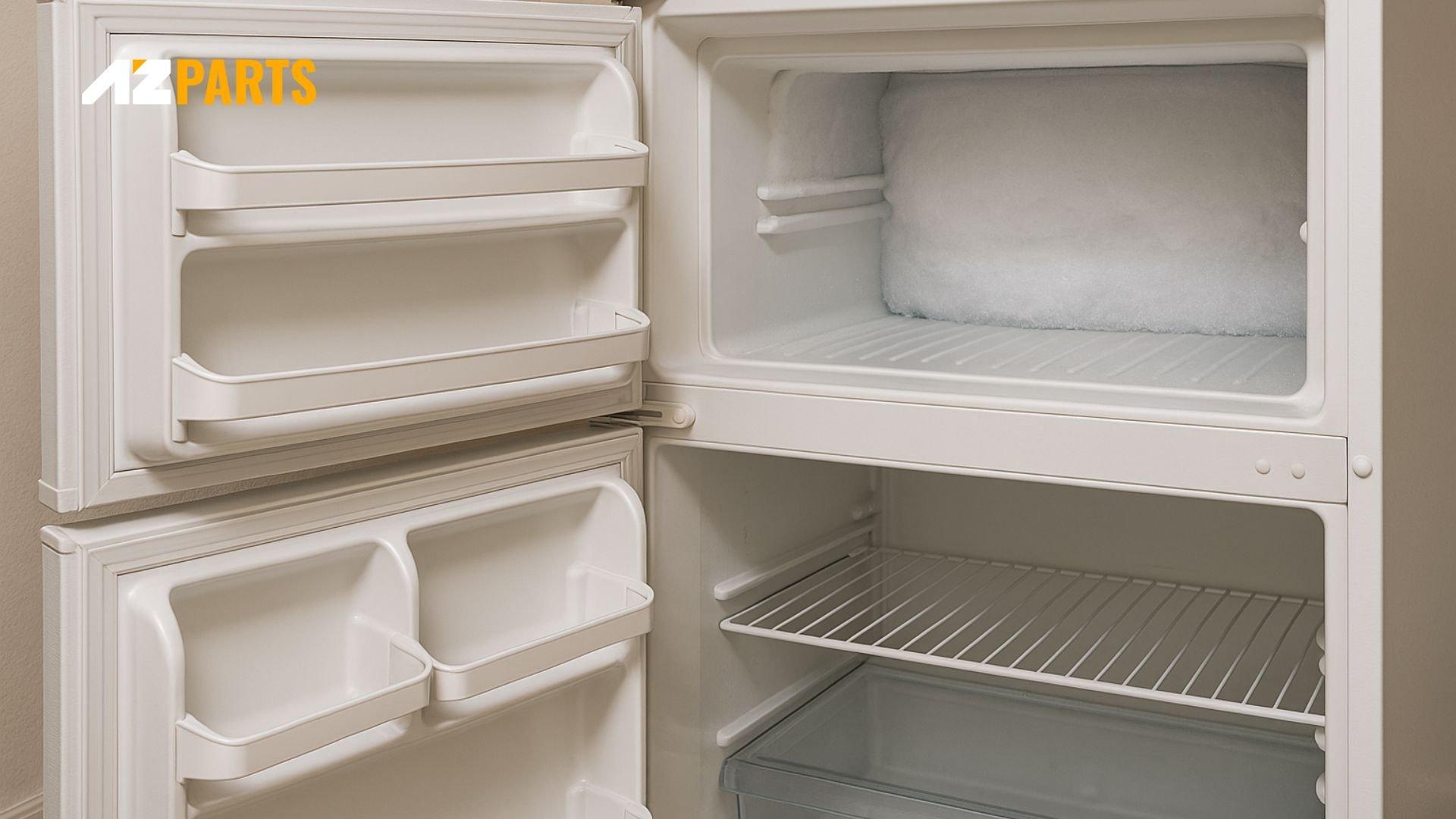Repair help
8 Common Samsung Refrigerator Problems and How to Fix
AZparts Team
Updated on July 1, 2025
8 min read
Samsung refrigerators are known for their modern design and smart features, but over time, they may still experience issues. From cooling problems to malfunctioning ice makers, many Samsung refrigerator problems can be frustrating yet manageable. In this guide, AZParts will walk you through the most common issues and show you how to fix them quickly and safely, helping you keep your fridge running at its best.
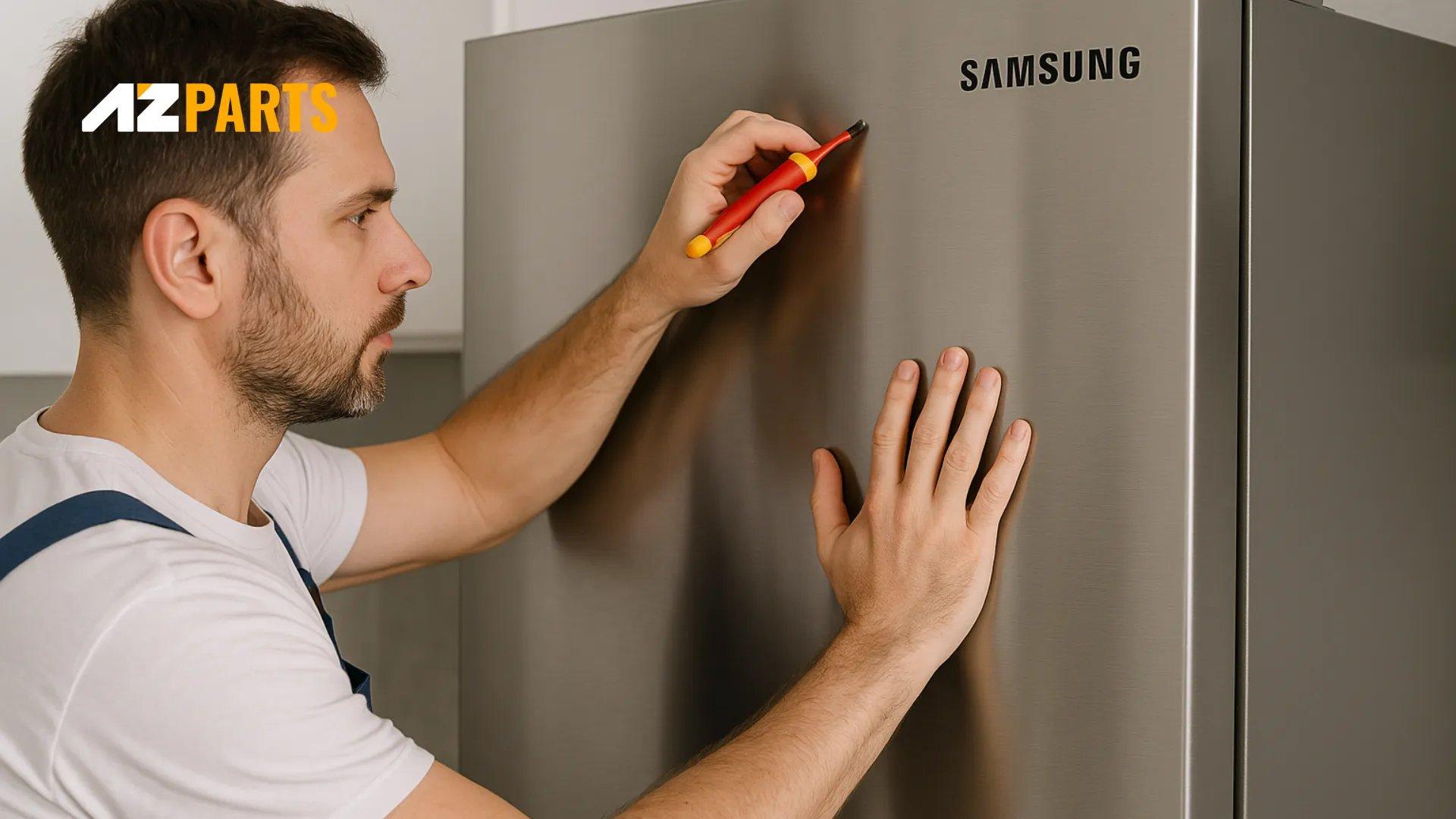
1. 8 Samsung Refrigerator Problems and Quick Fixes
Before you call for a technician, it helps to know which problems are most common in Samsung refrigerators and how to spot them. Here are the top issues that users often face, along with simple tips to identify and fix them:
1.1. Samsung Refrigerator Not Cooling
When a Samsung refrigerator stops cooling, the door gasket is often the cause. This rubber seal helps keep cold air inside and blocks warm air from entering. Over time, the gasket can wear out, tear, or collect dirt. A loose or dirty gasket cannot maintain a proper seal, which causes cold air to leak and reduces cooling performance.
To fix the problem, you should check the gasket for any dirt or visible damage. You can use a cloth to clean the seal thoroughly. If you find that the gasket is cracked or does not fit tightly, you need to replace it with a new one. After you install the new seal, the refrigerator should run for at least 24 hours to return to its normal cooling temperature.
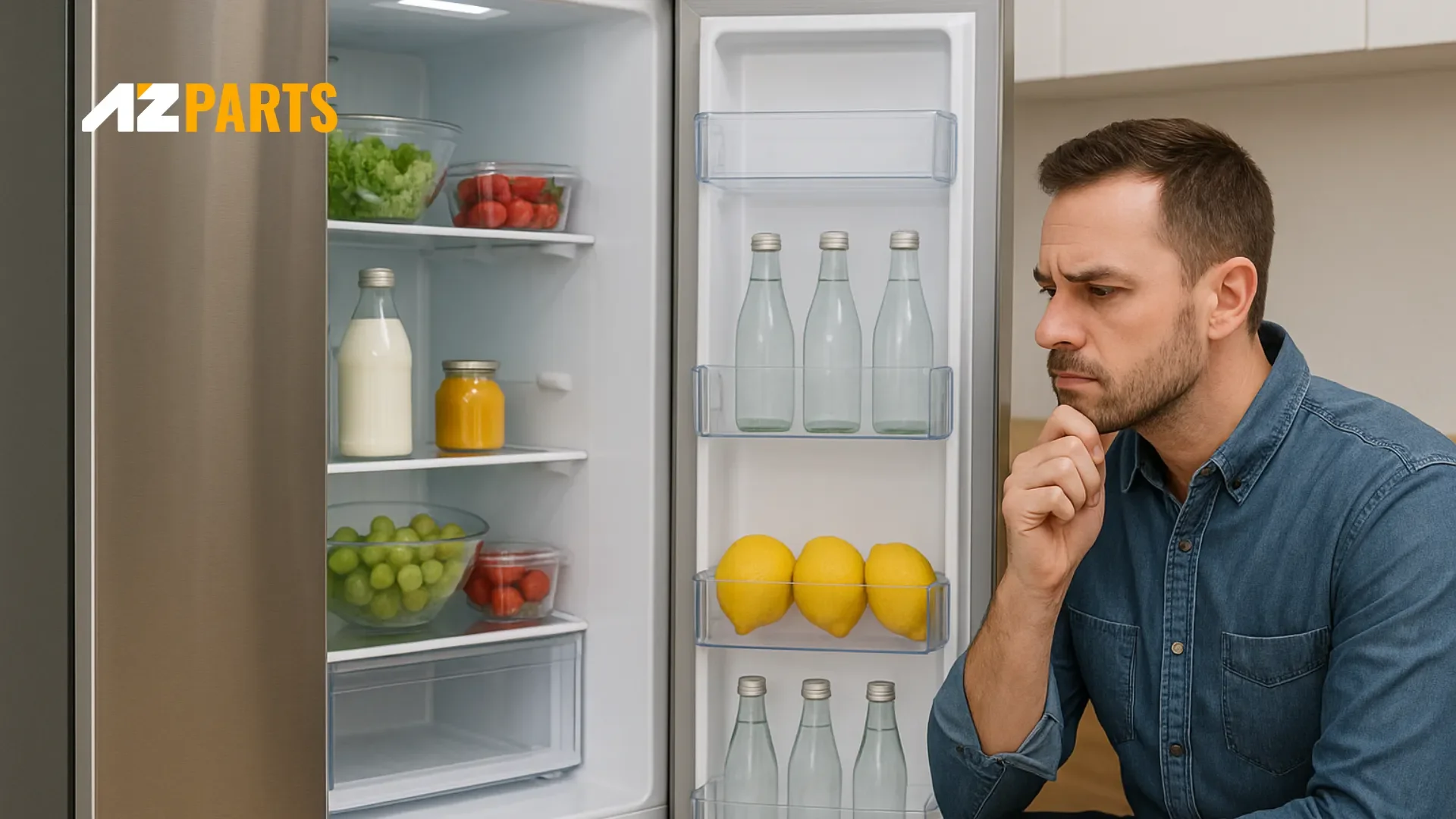
Samsung refrigerator stops cooling if the door gasket is dirty or broken (Source: AZParts)
1.2. Freezer Works But Fridge Is Warm
If your freezer is cold but the refrigerator section feels warm, the issue is likely related to restricted airflow. Cold air travels from the freezer into the fridge through internal vents. When these vents are blocked by ice buildup, food items, or a clogged defrost drain, the fridge compartment cannot stay cool. A missing or damaged drain clip may also cause excess frost, which blocks the flow of cold air.
To fix the issue, you should check the vents for blockages and clear the defrost drain if it is clogged. If the drain clip is damaged or missing, replace it to prevent future frost buildup. AZParts offers high quality Samsung refrigerator drain clips to help restore proper airflow. Once the airflow is back, the fridge should cool normally again.
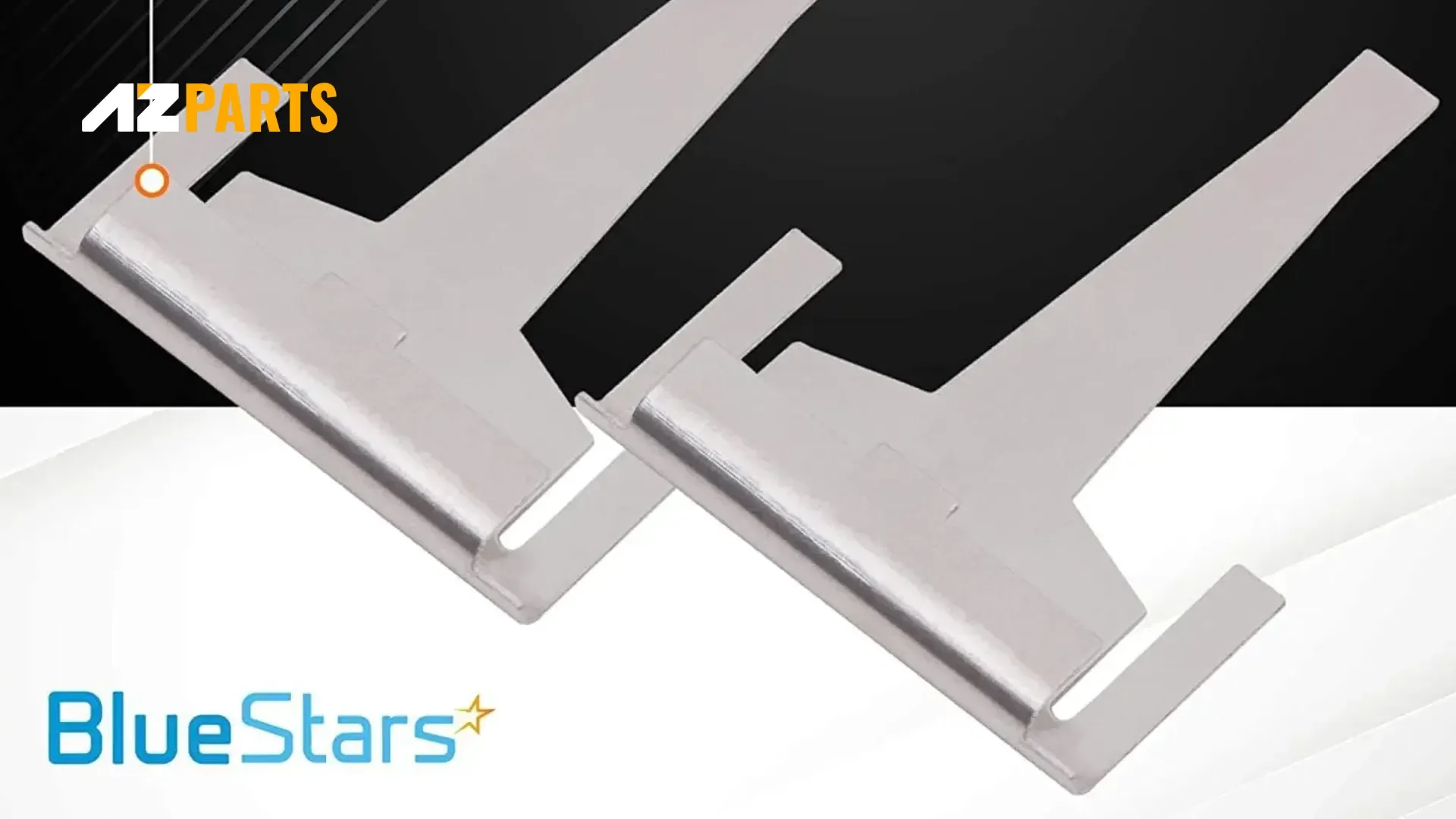
Samsung refrigerator drain clips from AZParts help restore proper airflow (Source: AZParts)
1.3. Water Leaking from Refrigerator
Water leaking from your Samsung refrigerator can come from several places. Leaks under the unit may be caused by an unlevel fridge. Inside the fridge, a loose or improperly installed water filter is often the culprit. If the leak is behind the fridge, it may be due to a loose water supply line or an incorrectly connected inlet hose.
To fix the issue, you should first shut off the water supply to prevent further leakage. Check if the fridge is level and make sure the water filter is properly installed. If the refrigerator water filter is damaged, replace it with a new one. It is also important to inspect the water supply line and hose connections to ensure everything is secure and tight.
1.4. Samsung Ice Maker Not Working
If your Samsung refrigerator stops making ice, poor airflow inside the freezer may be the reason. When vents are blocked by too much frost or large food containers, cold air cannot circulate properly. This can cause moisture to build up and freeze, making it harder for the ice maker to work as it should.
To fix the issue, turn off the fridge and leave the freezer door open so the frost can melt completely. Once everything is clear, check that no items are blocking the vents and try to organize the freezer so air can move freely. Good airflow helps prevent frost and keeps your ice maker running smoothly.
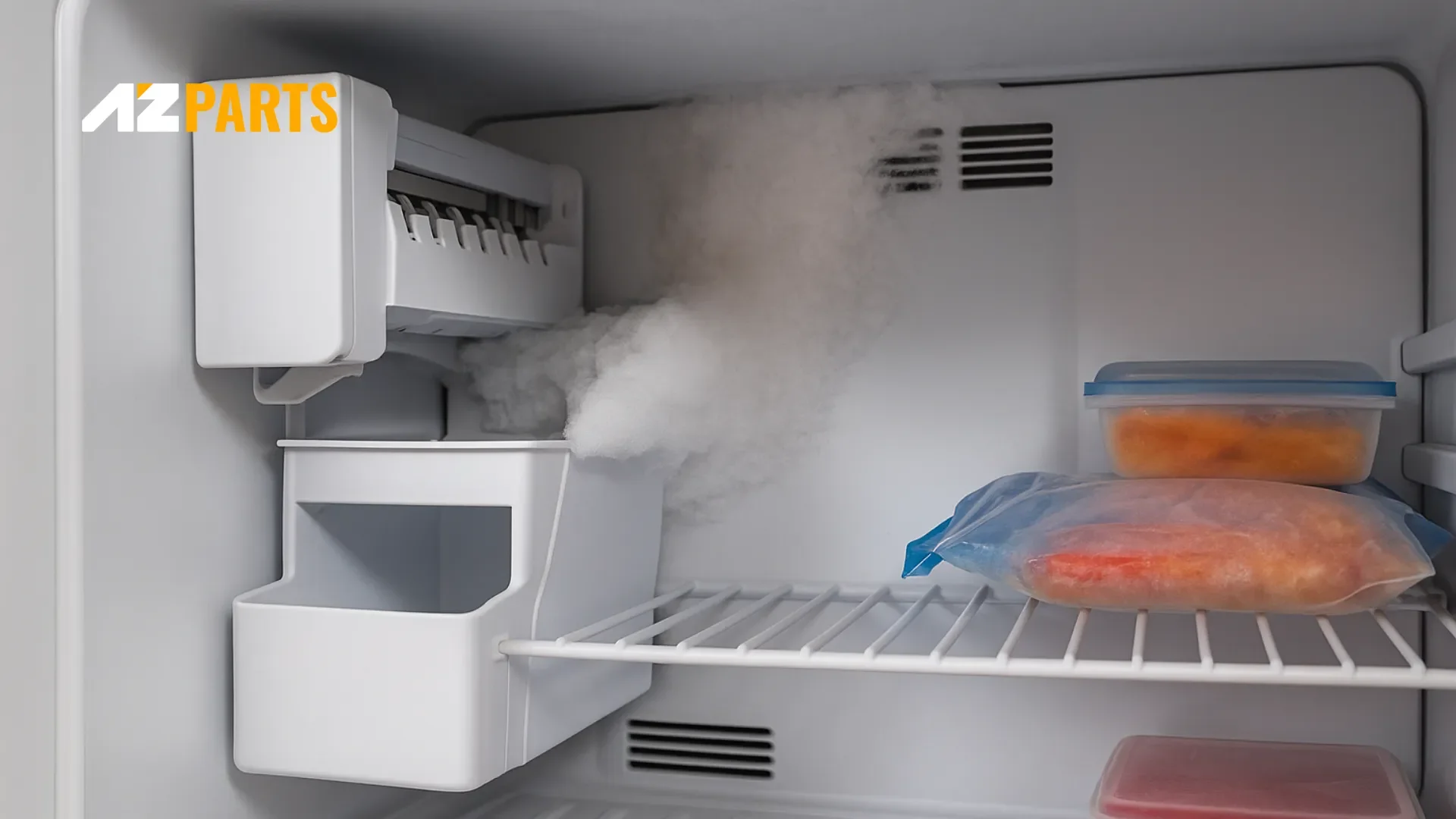
Poor airflow inside the freezer causes Samsung refrigerator to stop making ice (Source: AZParts)
1. 5. Samsung Refrigerator Making Loud Noises
Loud or unusual noises coming from your Samsung refrigerator often point to an issue with the evaporator fan. This fan is located inside the unit and plays a key role in keeping cold air moving. When ice builds up around the blades or objects inside the fridge block the airflow, the fan may knock, rattle, or vibrate loudly as it spins.
Addressing the noise starts with safety. You should unplug the refrigerator before doing any inspection. Once powered off, look for anything that might be touching the fan blades, such as food boxes pushed too far back or frost buildup near the vent. Clear the area and let any ice melt naturally. Once airflow is restored and obstructions are gone, the noise should stop.
1.6. Uneven Temperatures Inside the Fridge
When your Samsung refrigerator cannot maintain even temperatures, food may spoil faster or freeze in the wrong places. This usually points to issues with the refrigerator thermostat, thermistor, or damper control. If cold air is not circulating properly, some areas may become too warm while others stay overly cold.
To fix this, start by checking the temperature settings and adjusting them if needed. Make sure the air vents inside the fridge are not blocked by food containers. You can also test the thermistor with a multimeter, if its resistance does not change with temperature, it needs replacement. If these steps do not solve the problem, contact a technician to inspect the damper control and other internal components.
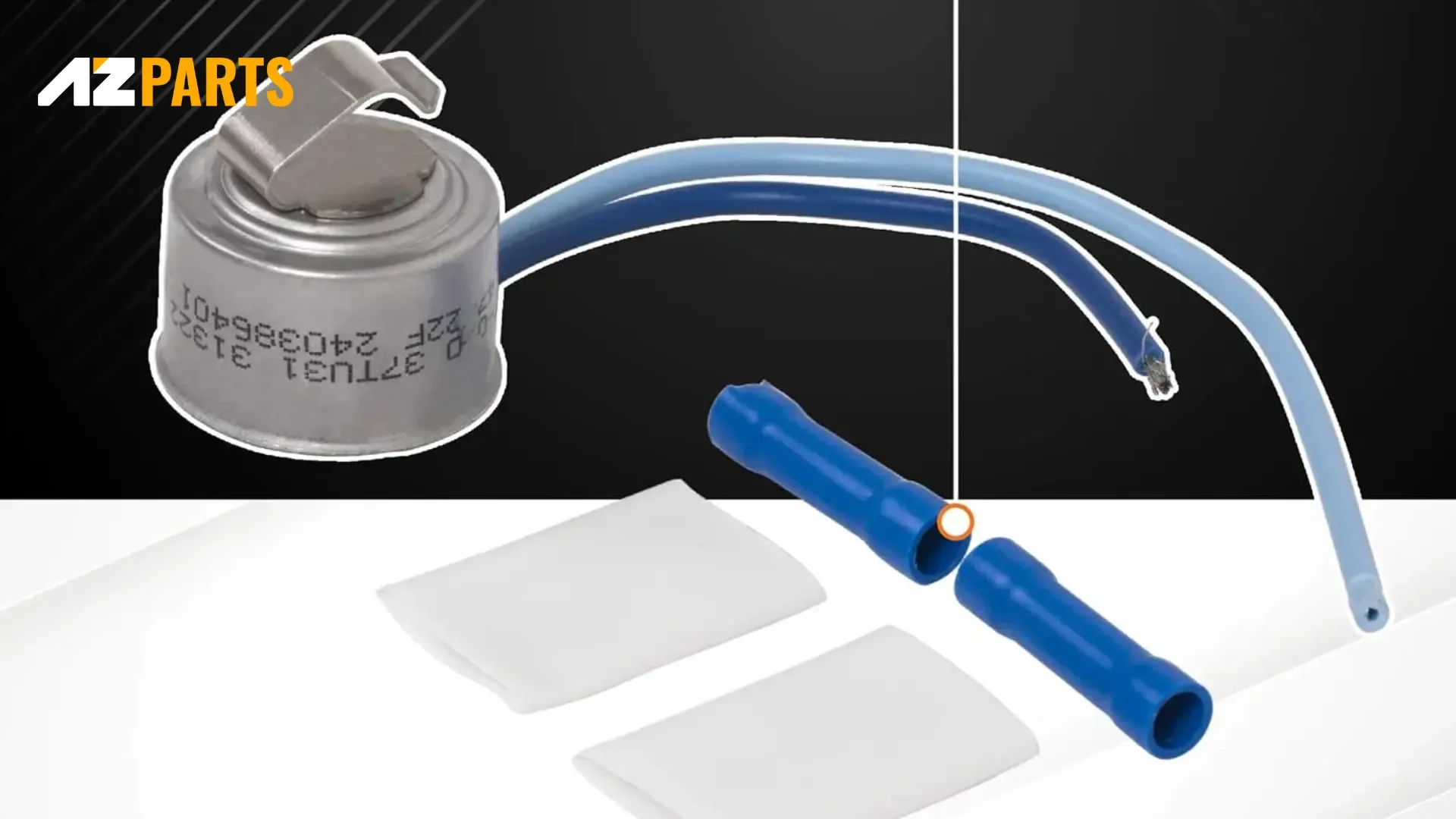
Refrigerator thermostat from AZParts help restore the even temperature (Source: AZParts)
1.7. Control Panel Not Responding
If the control panel on your Samsung refrigerator becomes unresponsive, it may be due to a simple glitch, a power issue, or a faulty control board. When the display does not light up or buttons do not react, the fridge may not receive power correctly, or the panel may have locked itself.
To begin troubleshooting, try resetting the refrigerator by unplugging it for a few minutes and plugging it back in. This simple step can often fix temporary software issues. If the panel is still not responding, check if the child lock feature is turned on and disable it. In cases where these solutions do not help, the refrigerator control board or display panel may need inspection or replacement by a technician.
1.8. Samsung Refrigerator Not Defrosting
If your Samsung refrigerator is not defrosting properly, you may notice frost building up on the back wall or around the evaporator coils. This usually happens when the defrost thermostat or timer is not working as it should. When these parts fail, the defrost heater cannot melt the ice, and the fridge may get too warm over time.
To fix the problem, you can use a multimeter to check if the defrost thermostat or refrigerator timer has continuity. If either part is faulty, it needs to be replaced. You can also try turning the defrost timer manually to see if it activates the defrost cycle. If you are unsure how to perform these steps or if the issue continues, it is best to call a professional to inspect and repair the unit.
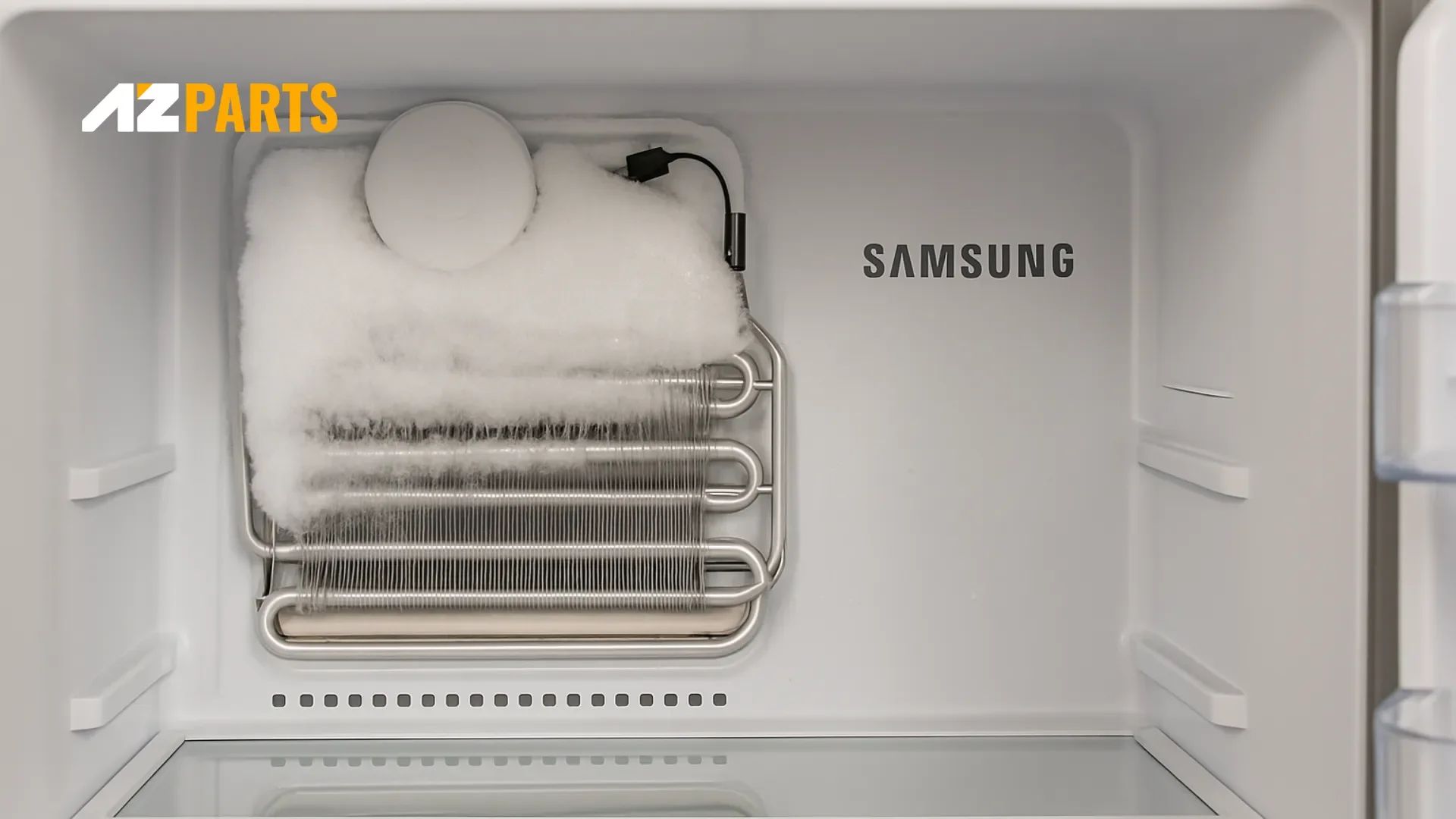
Samsung refrigerator cannot defrosting properly when thermostat or timer is failed (Sources: AZParts)
2. FAQs about Samsung Refrigerator Problems
After exploring the most common Samsung refrigerator problems and their fixes, you might still have a few questions in mind. Here are some quick answers to help you better understand and care for your appliance:
2.1. What is the common problem with Samsung refrigerators?
The most common issues include cooling failures, frost buildup, and malfunctioning ice makers. These are often caused by worn door gaskets, defrost system problems, or poor airflow inside the fridge.
2.2. Where is the reset button on Samsung refrigerator?
Most Samsung refrigerators do not have a physical reset button. To reset, press and hold the Power Cool and Power Freeze buttons simultaneously for about 10 seconds until you hear a chime.
2.3. Why is my Samsung refrigerator not cold?
Lack of cooling can result from blocked air vents, dirty condenser coils, a faulty thermostat, or a broken compressor. Always check temperature settings and airflow before assuming a major repair is needed.
2.4. What are the disadvantages of Samsung refrigerators?
While stylish and feature-rich, Samsung refrigerators are known for issues with the ice maker, inconsistent cooling, and control panel glitches. Some repairs can also be expensive due to proprietary parts.
2.5. How long should a Samsung refrigerator last?
With regular maintenance and proper use, a Samsung refrigerator can last 10 to 15 years. Lifespan depends on factors like model type, environment, and how well key components are maintained.
Keeping your refrigerator in top shape starts with understanding common issues and addressing them early. Regular maintenance and timely repairs can help avoid costly breakdowns and extend your appliance’s life. If your fridge is not working as it should, replacing worn components may be the solution. AZParts offers a wide range of high quality Samsung refrigerator parts to help you restore performance and keep your appliance running efficiently.
Contact Information:
- Address: 8 The Green, Ste A, Dover, Delaware 19901-3618, United States
- Email: support@azparts.com
Refrigerator
- 1. 8 Samsung Refrigerator Problems and Quick Fixes
- 1.1. Samsung Refrigerator Not Cooling
- 1.2. Freezer Works But Fridge Is Warm
- 1.3. Water Leaking from Refrigerator
- 1.4. Samsung Ice Maker Not Working
- 1. 5. Samsung Refrigerator Making Loud Noises
- 1.6. Uneven Temperatures Inside the Fridge
- 1.7. Control Panel Not Responding
- 1.8. Samsung Refrigerator Not Defrosting
- 2. FAQs about Samsung Refrigerator Problems
Further Reading
Further Reading

